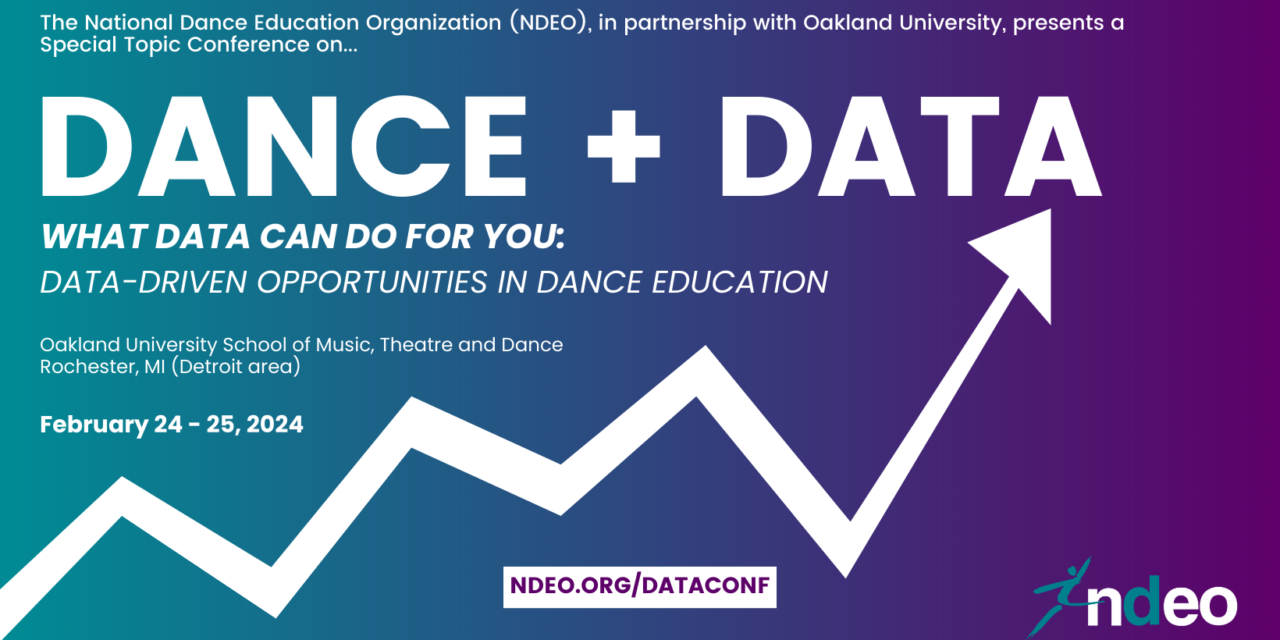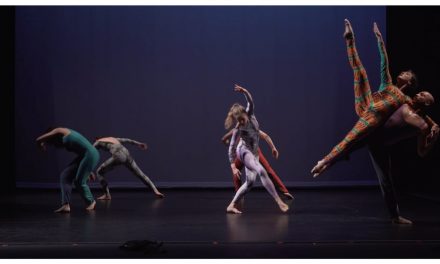Growing up in America, at least at the end of the last century, we were often told that “girls are good at language arts, boys are good at math.” Other “facts” included the dubious distinctions between artist and academic, intellectual and athlete, and my favorite, dancer and scholar.
These distinctions are not real. As a dancer, educator, and writer, the number of people who introduce themselves with the caveat, “I’m a dancer but I love a spreadsheet” is astonishing. At this point, based solely on anecdotal evidence, I am pretty sure that all dancers love spreadsheets. The idea that dancers don’t understand complex systems and intellectual pursuits is fiction. This false binary could be another tool used, consciously or not, to maintain an inequitable power structure based on outdated leadership models. These erroneous equivalencies are based on sexism, genderism, and classism. Most dancers become serious about the art form around the age of twelve or thirteen. This is the same age at which girls start to lose confidence and interest in math and science. As dancers become more focused on the technical demands of the industry, the misperception that they can’t understand numbers and data could contribute to the tunnel vision that many young dancers have, keeping them uninformed as they progress through their education and into their professional lives.
Fortunately, many professionals in the world of dance are actively working to make quantitative data accessible and comprehensible to dancers at every stage of their career development. The National Dance Education Organization (NDEO) has a data-focused conference at the end of February; What Data Can Do for You: Data-Driven Opportunities in Dance Education. I spoke to three organizers of the event, all leaders in the field. Susan McGreevy-Nichols is the Executive Director of NDEO. Melissa Greenblatt is the managing director of NDEO. Dr. Elizabeth Kattner is the Assistant Director of the School of Music, Theatre, and Dance and the Paul and Doris Travis Associate Professor of Dance at Oakland University outside of Detroit, Michigan. She is collaborating with NDEO to produce this conference.
In addition to the educators listed above, I spoke to Dr. Paula Thomson, a professor of Dance and Kinesiology at California State University, Northridge, a clinical psychologist, and a leading researcher on the psychology of dancers.
Finally, I spoke to Elizabeth (Liza) Yntema, the founder and CEO of Dance Data Project®, a non-profit dedicated to increasing gender equity in dance by providing metrics-based analysis of pay and leadership within the industry.
While all of these leaders highlighted similar ideas around transparency and accountability, four distinct areas of concentration stood out; 1) The power of quantifiable data when advocating for the inclusion of K-12 dance education in schools. 2) The importance of quantifiable data in higher education to evaluate enrollment, faculty numbers and salaries, administrative processes, budgets, and other operational information within institutions to build better programs. (NASD) 3)The use of quantitative data in assessing dancers’ physical and emotional health. and 4) The importance of accessible, verifiable data in creating industry-wide transparency. The purpose of this article is to introduce the concept of data analysis and illustrate how educators and artists can employ quantitative data analysis to better understand all aspects of the dance industry. I will also identify areas within dance education, at both the undergraduate and graduate level, that research professionals believe need addressing to support increasing equity and accessibility in all facets of the dance community. Finally, I will present opportunities for dance professionals and dance leaders to engage with data in meaningful conversation.
The first thing a reader needs is a basic definition of quantitative data. According to the National Library of Medicine, quantitative data are data represented numerically, including anything that can be counted, measured, or given a numerical value. Quantitative data can be classified in different ways, including categorical data that contain categories or groups (like countries), discrete data that can be counted in whole numbers (like the number of students in a class), and continuous data that is a value in a range (like height or temperature). Quantitative data are typically analyzed with statistics.
Dr. Thomson explained the difference between quantitative and qualitative data as it relates to dance research and dancers.
Quantitative data provides empirical evidence that can offer information that answers the relationship between variables and how variables are related, how they operate as predictors for specific factors, how they may mediate or moderate predicting variables, as well as show clear prevalence rates and odds ratios. Qualitative data shows phenomenological patterns but they are not regarded as relational, predictive, or prevalence rates. Qualitative results can guide the creation of quantitative instruments. The most conclusive research regarding dancer’s physical and emotional well-being is quantitative whereas qualitative results suggest patterns. You are not able to generalize the study results to larger populations (outside of the dance world). An ideal way to integrate both (types of data) is to conduct mixed-method studies that gather large data sets for quantitative analyses and then conduct interviews with a subsample (from the larger group to figure out how that data is representative of certain characteristics, situations, or responses).
Broken down, quantitative data is analyzed statistically and answers questions about “what” or “how”. In contrast, qualitative data studies the experience of those being researched. It gives an interpretation of the “why”. (From Grand Canyon University)
NDEO’s upcoming conference, What Data Can Do for You: Data-Driven Opportunities in Dance Education is a perfect opportunity for dance professionals to take a deep dive into the many avenues that data-driven research can lead down. The conference will take place at the Oakland University School of Music, Theatre, and Dance in Rochester MI (Detroit area) at the end of February. Over two days, participants will be able to attend sessions facilitated by leading researchers on such varied topics as Choreographic Tension Mapping: Data & Choreography, Data Informed Dance Literacy, Empirical Research and the Dance Educator, and Intent vs. Impact: data and the Student Experience.
Though the conference at Oakland University will cover numerous topics, Dr. Kattner is very excited to highlight the work that is being done to advance the inclusion of dance into Michigan’s public school curriculum. Her work in this realm began as a response to the lack of quantifiable data about the benefits of dance within K-12 curriculums. She is both giving the keynote address and will lead a panel that will include K-12 and Higher Education representatives who will discuss forming and implementing an extensive data-based study tracking school (academic) success among K-12 dance students. There is a growing understanding that arts education is essential to the success of students. Unfortunately, not all students have access to dance education. Ms. McGreevy-Nichols points to The National Arts Education Report for information and as a model for further research. This extensive quantitative study, whose lead author is Robert Morrison, has good data from 17 states. It shows that dance is incredibly underrepresented in most states, especially in comparison to other art forms. The goal is to extrapolate this method to all other school districts.
In addition to the formation of the aforementioned study, there is a larger goal for the conference:
What we want to do is demystify the word research or anything with the word data, for the average dancer or dance educator. Because if you’re not a numbers person, or you don’t really thrive on all this, it might seem really intimidating. But in my mind, data comes from everywhere. Are you writing a grant for your dance company? Well, the grantee or the grantor probably wants to know what you accomplished with this money. That’s data. How many tickets did you sell? Not, you know, what was the audience positive participation survey? Or you’re implementing a new warmup program; How many injuries are your students having at the studio? There are just so many different ways that data in numbers can be used to help advance the field. (Melissa Greenblatt)
Dance advocacy goes beyond dance in K-12 schools. Data is essential in maintaining arts programs in higher education and dance research. Dr. Thomson has been instrumental in creating the new BA in Dance (beginning in the Fall of 2024) at California State University, Northridge. I asked her how a university can use quantitative data to justify its programs, expand offerings, and ultimately affect its accreditation.
This is a big question and not easy to answer because ultimately money is often the driving force for programs. Quantitative data is required at CSUN (and I assume the majority of universities). We gather assessment data on teacher evaluation, course evaluation, learning outcome assessment analyses, and student success rates during college and after graduation. At CSUN we also assess DEI patterns to reduce equity student success gaps. The formal research studies that we and other colleges collect provide robust evidence that outlines how dance helps motor development, cognitive development, socializing skills, mental health, and physical wellness.
Students also participate in research at CSUN as students, interns, and study participants.
Good quantitative experimental studies are needed to evaluate the training effects for dancers. Evidence-based training protocols are essential for analyzing biomechanical, physiological, and psychological changes and effect sizes for these changes. All our dancers take a 100-level GE statistics course. They are all invited to participate in multiple quantitative studies (biomechanical, motor learning, and/or psychophysiological). Our dancers participate in these studies and they have opportunities to intern in our research labs including learning how to collect data, analyze data, and work with statistical processing packages (SPSS). They all learn about Institutional Review Board approval and informed consent. The greater majority of our dancers participate in research and do not seek further training. Research engagement is part of our new BA in Dance program as well as part of our BS in Kinesiology Dance Option and Dance Minor.
It makes sense that data collection would be essential to schools, universities, and scientific research. Dance Data Project® uses the same methods to report on the state of the dance industry. CEO Elizabeth (Liza) Yntema explains the mission statement of the organization:
We transform anecdotes into hard facts, utilizing data analysis to provide an irrefutable sense of the current state of equity in the dance ecosystem. We look longitudinally, providing a year-over-year perspective.
Through longitudinal analysis, we are building an archive of information that has never been cataloged in an industry-shaking way. Our data has informed benchmarking for even the smallest of organizations, helped advocate for fair compensation practices, and been cited in countless grant applications, regional and national news sources, and academic journals. By sticking to our “numbers don’t lie” approach, we have filled a fundamental information gap in an industry that, at first glance, appears to be just “tutus and pointe shoes” – at the end of the day, it’s big business too.
Dr. Thomson explained the importance of longitudinal data: Longitudinal data is a study design that tracks the changes over years within the same participants. It allows you to truly see causes that lead to certain effects.
Ms. Yntema: DDP is the “what,” not the “why,” when it comes to the oft-mentioned narrative of gender inequity in the international dance industry. When reviewing a report from DDP, you’ll find a thorough dissection of the financials and business-making (or breaking) decisions of organizations of all different sizes in the dance sector. Meticulous scraping of publicly available Form 990s informs the basis for our data, and important questions, examples, and comparisons are teased out of this mass of information to provide data that truly dances across the page.
We firmly believe in providing this information to the sector – free of charge. Far too many research organizations in this industry lock their information behind a paywall. DDP will never “monetize” our data, which so many consultants urge not for profits to do.
We address inequities and accessibility head-on, offering our research to the public with no stipulations. Our only ask, in return, is that they 1. Share the findings that speak to them and 2. Do something about it. Whether it is through bringing the research forward in contract negotiations or working hard to source new female talent for choreographic and leadership positions, every member of the dance community can build on the work that we do. Together, we will ensure the sustained future of an industry that we love, with fair representation, power, and opportunity granted to all of its participants.
All of these artists, educators, and advocates emphasize the importance of university dance programs teaching students the importance of data analysis.
Dr. Kattner: One of the things that we teach our students is it’s very, very important if you want to have a profession and dance, that you have to be the whole package. There are very, very few jobs where you just go and dance full-time.
Dr. Thomson: CSUN may be unique (including our new BA in Dance) because we require that all dancers take a statistics course to complete a GE requirement. Dance students also need to learn how to read evidence-based research papers so that they can learn this language. It helps develop critical thinking and encourages dancers to ask questions and explore information, rather than reading opinions.
Ms. Yntema concurs; Data is the most important tool to advocate for change, in any industry. The sooner that dance students understand how to, and are empowered to sift through data for answers to questions when it comes to their current training and their prospective future employers, the better. Data highlights inequities that persist within a sector in an objective and inarguable way.
Coursework that covers research methods can help dancers understand how research is conducted and how they can interpret data to be used for the betterment of the sector. This can help dancers who intend on auditioning for companies, so they can take a deeper look at the operations and practices of future employers. It can also be extremely useful if their future work involves grant writing, be it for independent choreographic projects or as a part of a dance administration’s development team. Future leaders in our industry need to have the power of data on their side, informing critical decisions at every step. The more they understand the importance and application of data at an early stage of their career, the better they are suited to advance within it.
Data and research are not beyond the intellectual scope of dancers. These forward-thinking professionals are leading the way towards more dance, greater health, and greater equity for all dancers at every stage of their careers. For more information, click on the following links:
National Dance Education Organization
National Association of Schools of Dance
Written by Nancy Dobbs Owen for LA Dance Chronicle.
Featured image: Promotional banner for Data + Dance Conference – courtesy NDEO












